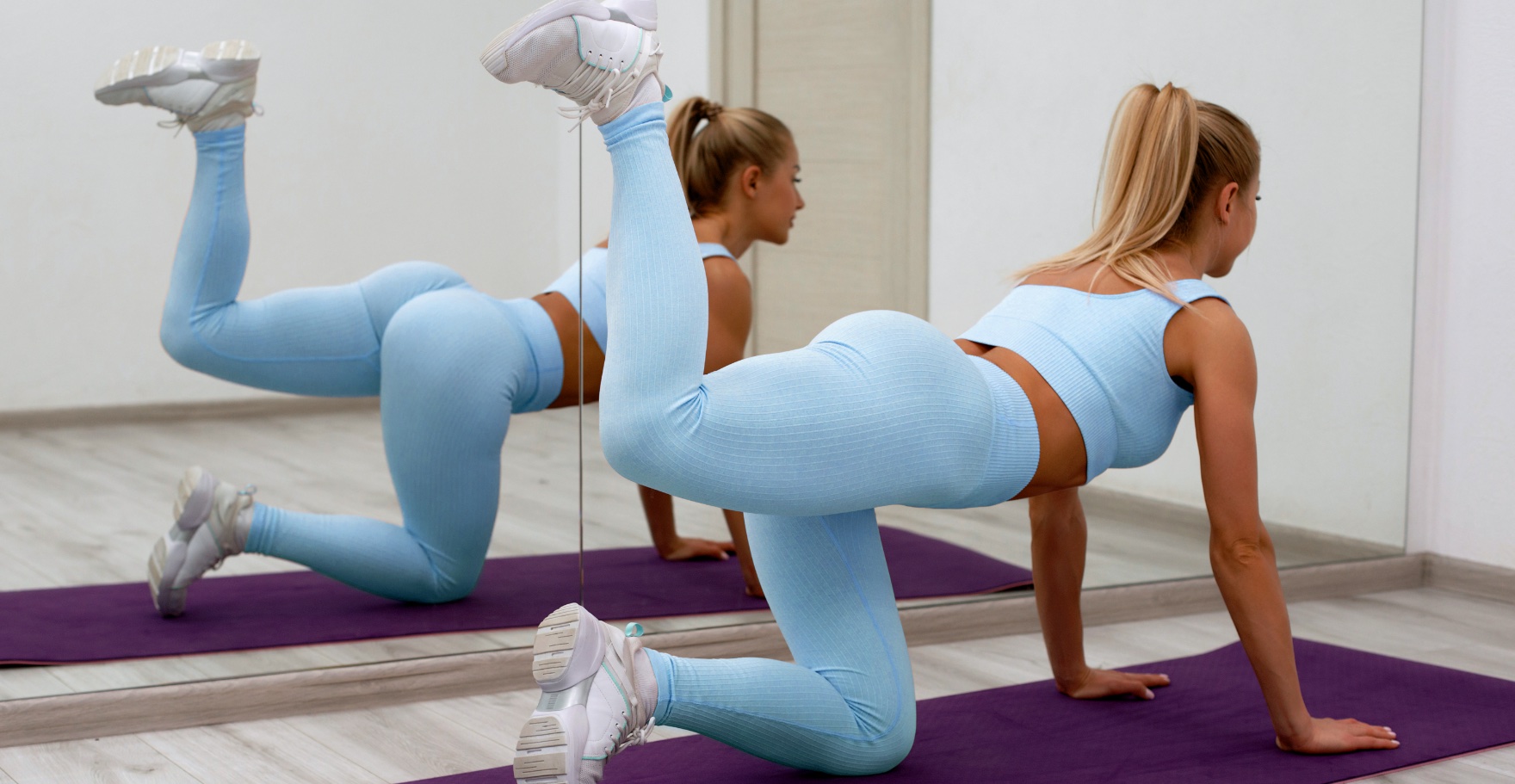
When it comes to strengthening and toning your legs without using any weights, donkey kicks are a convenient lower-body move that isolates your glute muscles. Far more than just being an aesthetic goal, strong glute muscles support your spine, help prevent injury, and make it easier to lift heavier weights and run faster.
But how do you do this slightly-odd sounding move, and what are the best donkey kick variations when it comes to sculpting your butt?
Like a bear crawl or a bird dog, the donkey kick is named after the move its namesake makes as it kicks its leg back. You do the exercise on all fours, and the hinge in your hips means the motion targets the gluteus maximus and gluteus medius. The gluteus maximus is the largest of the glute muscles and extends and externally rotates the hip joint, allowing you to do everyday things such as walking up the stairs. The gluteus medius sits underneath the gluteus maximus and also aids in rotating your hip, but also works to stabilize the pelvis.
As well as working on the glutes, the donkey kick also targets the hip flexor muscles, which are commonly tight in people who spend a good deal of time sitting down — here are more of the best exercises to do if you sit down all day. You’ll also need to engage your abs to keep your body stable as you kick, and your arms to hold your trunk in the move, so they’ll get a workout too.
How to do a donkey kick
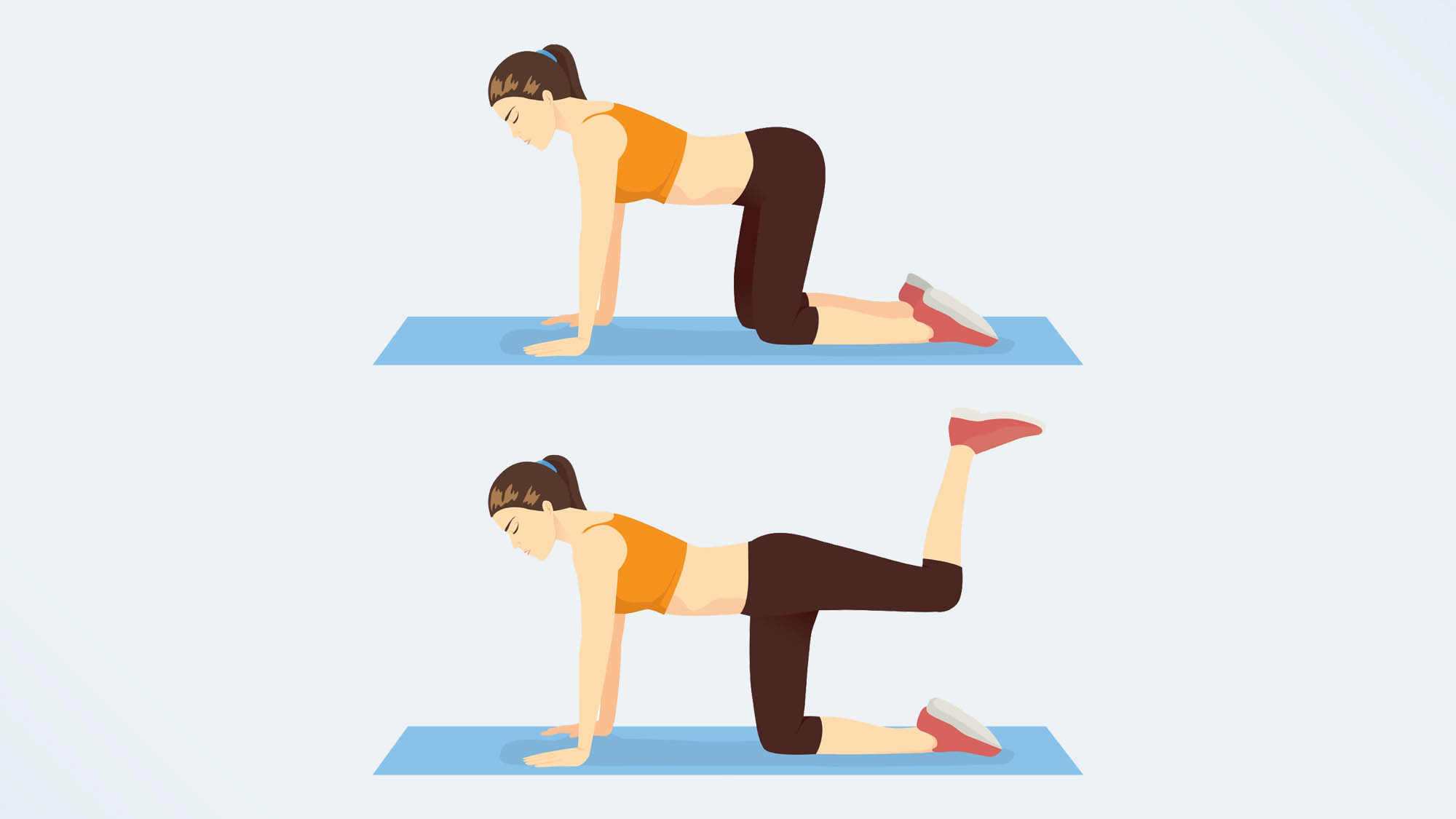
Let’s start by taking a look at how to do a donkey kick with the correct form:
- Start on all fours, with your knees stacked beneath your hips, and your hands beneath your shoulders.
- Make sure your back is flat — think about engaging your core, to prevent any arching in your lower back.
- Engaging your core, keep a 90-degree bend in your knee, and lift your foot up toward the ceiling. Make sure you don’t lift your leg too high — your lower back should not start to arch, and your hips shouldn’t twist.
- Squeeze your glute at the top, before returning to your starting position, but don’t drop your knee back down to the floor.
- That’s one rep. Complete all your reps on one leg before swapping to the other side.
The most common mistake people make when practicing the donkey kick exercise is too much movement through the spine. Don’t focus on how high you lift your leg — the movement should be small and controlled.
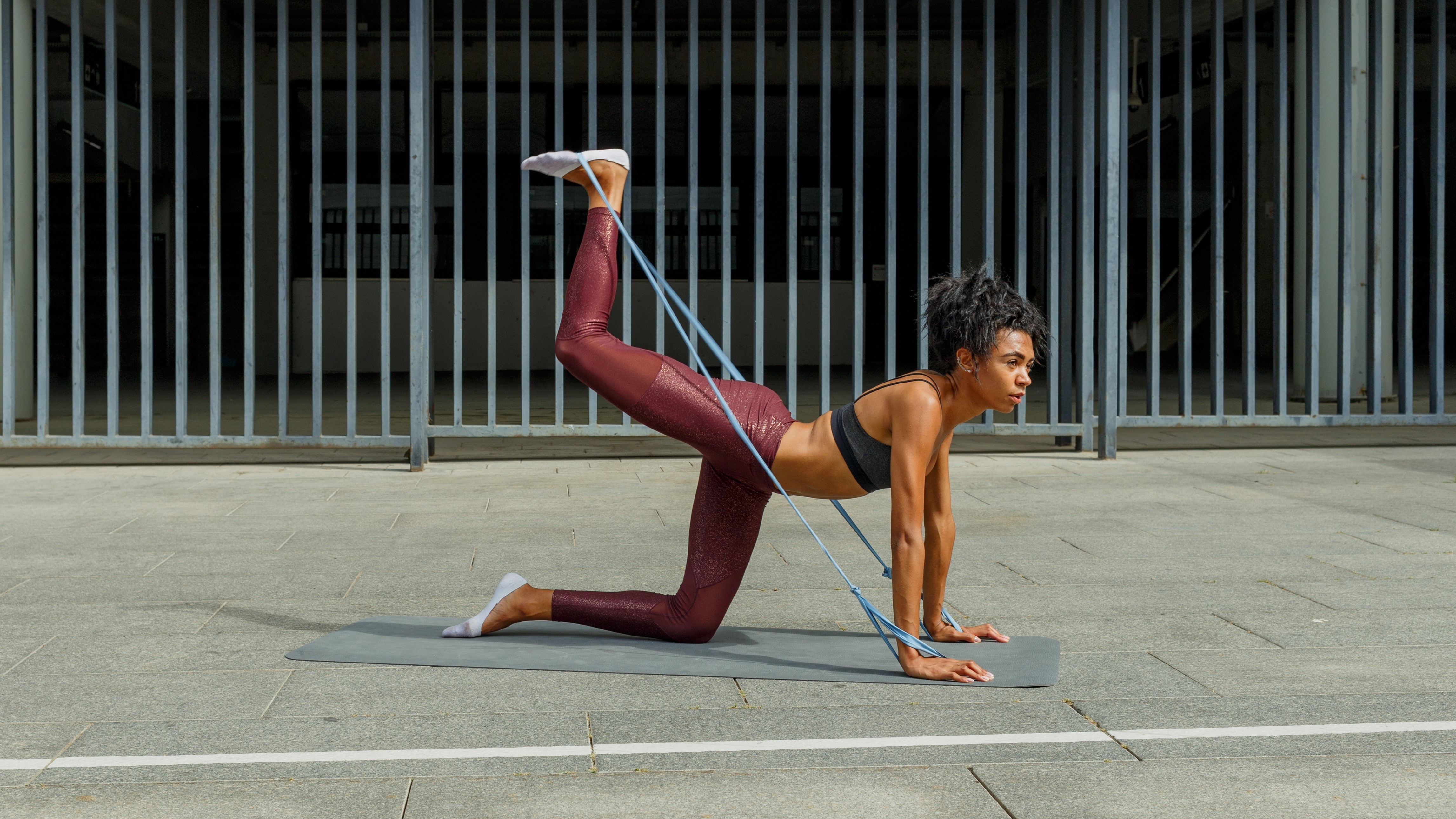
5 donkey kick variations to sculpt strong glutes:
If you’re looking to mix things up, here are some donkey kick variations to add to your next lower-body workout.
1. Resistance band donkey kick
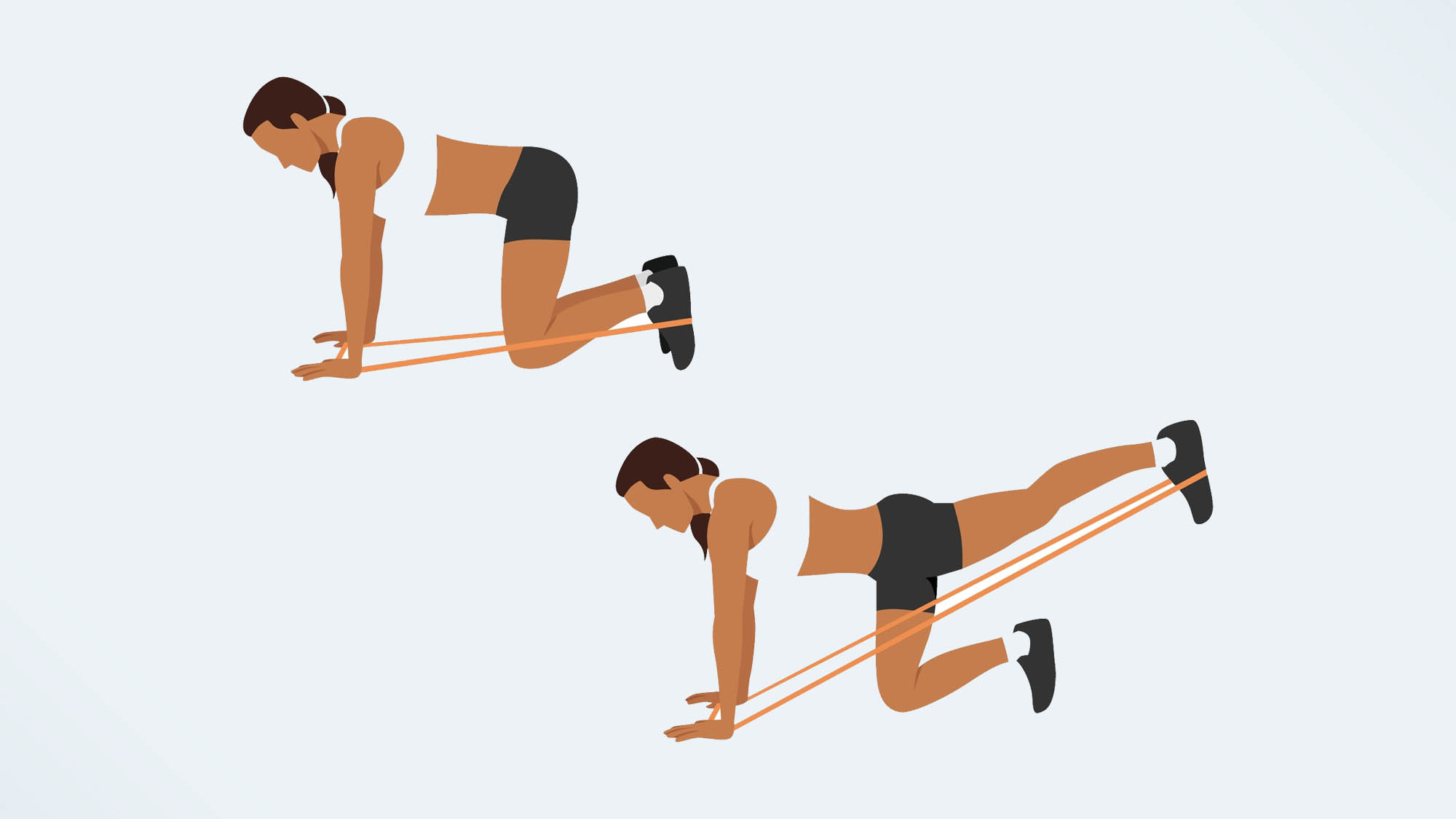
For this variation, you’ll need one of the best resistance bands:
- Place a small loop resistance band around your thighs, above your knees. Alternatively, hold one end of a long resistance band in either hand, and loop the other end around one foot.
- Start on all fours, with your wrists stacked underneath your shoulders, and your knees under your hips.
- Engage your core, and keeping the bend in your knee, kick your leg up and back, so your knee is in line with your hip.
- Flex your foot and push it up towards the ceiling — the resistance band will make this more challenging.
- Squeeze your glutes at the top of the movement, then lower back to your starting position.
- Complete all your reps on one leg before switching sides.
2. Weighted donkey kick
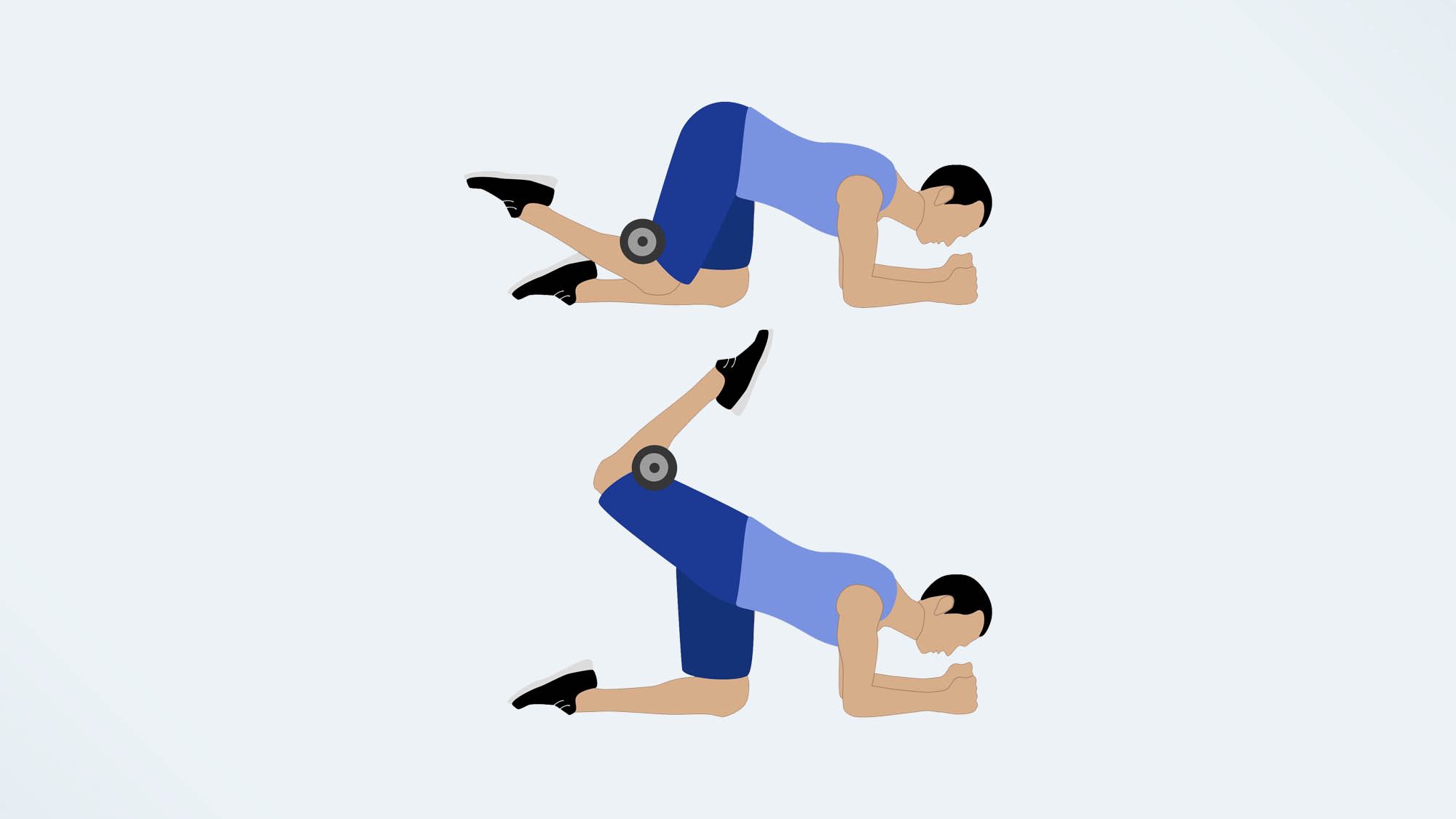
For this variation, you’ll need a lightweight dumbbell (shop the best adjustable dumbbells here) or a set of the best ankle weights:
- If you’re using a dumbbell, place a lighter dumbbell behind your knee, squeezing it with your leg bent for this exercise. If you have a set of ankle weights, strap one around each ankle.
- Start on all fours, with your wrists stacked underneath your shoulders, and your knees under your hips.
- Engage your core, and keeping the bend in your knee, kick your leg up and back, so your knee is in line with your hip.
- Flex your foot and push it up towards the ceiling — the extra weight behind your knee, or strapped around your ankle will make this more challenging.
- Squeeze your glutes at the top of the movement, then lower back to your starting position.
- Complete all your reps on one leg before switching the weight to the opposite side.
3. Straight leg donkey kick
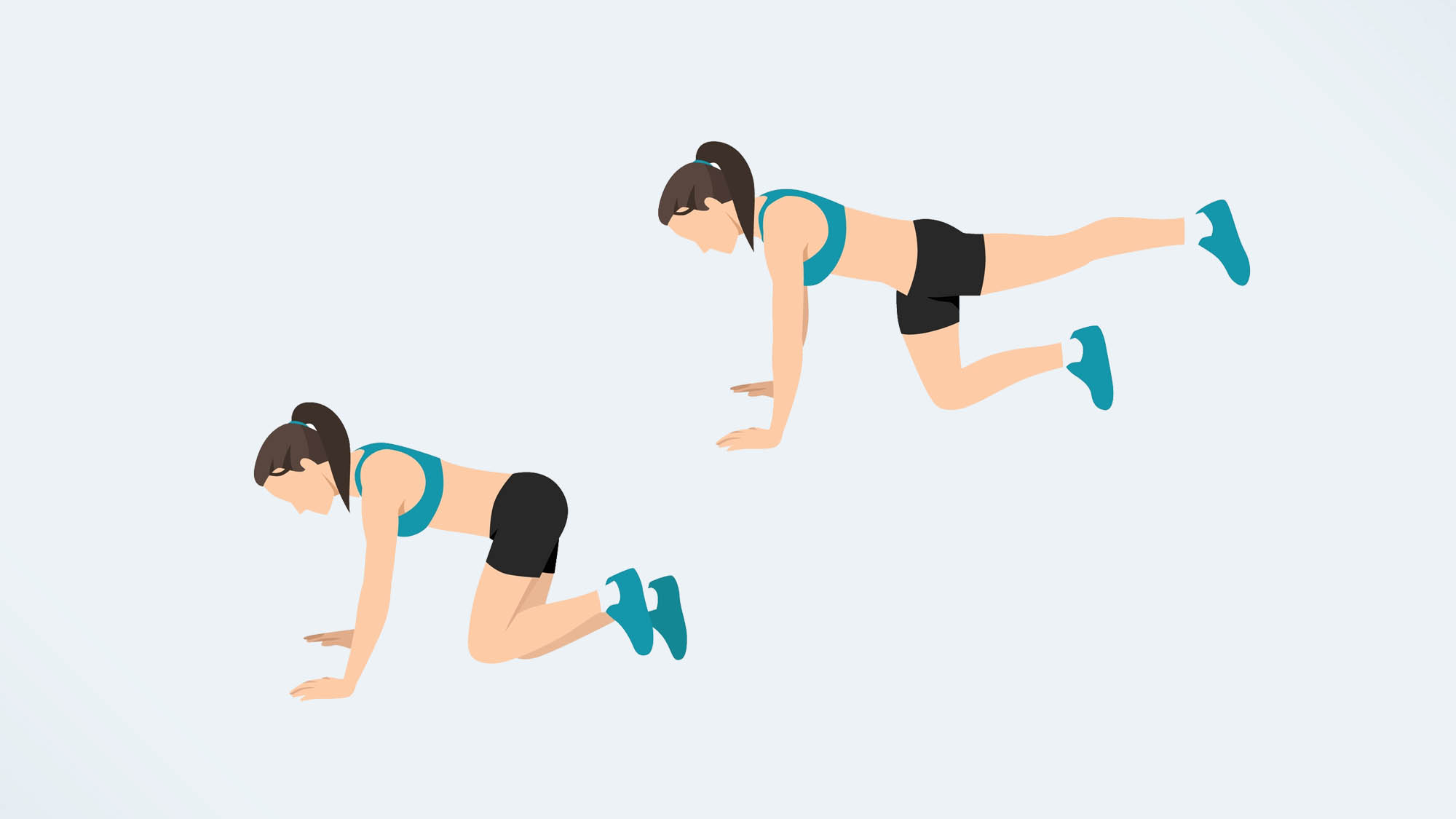
- Again, start on all fours, with your wrists stacked underneath your shoulders, and your knees under your hips.
- Engage your core, and kick your leg out and back, so your entire leg is in line with your hip.
- Keep a point in the toe this time, and pulse your leg up to the ceiling — you should feel this move down the back of your leg.
- Squeeze your glutes at the top of the movement, then lower back to your starting position.
- Complete all your reps on one leg before switching the weight to the opposite side.
4. Standing donkey kick
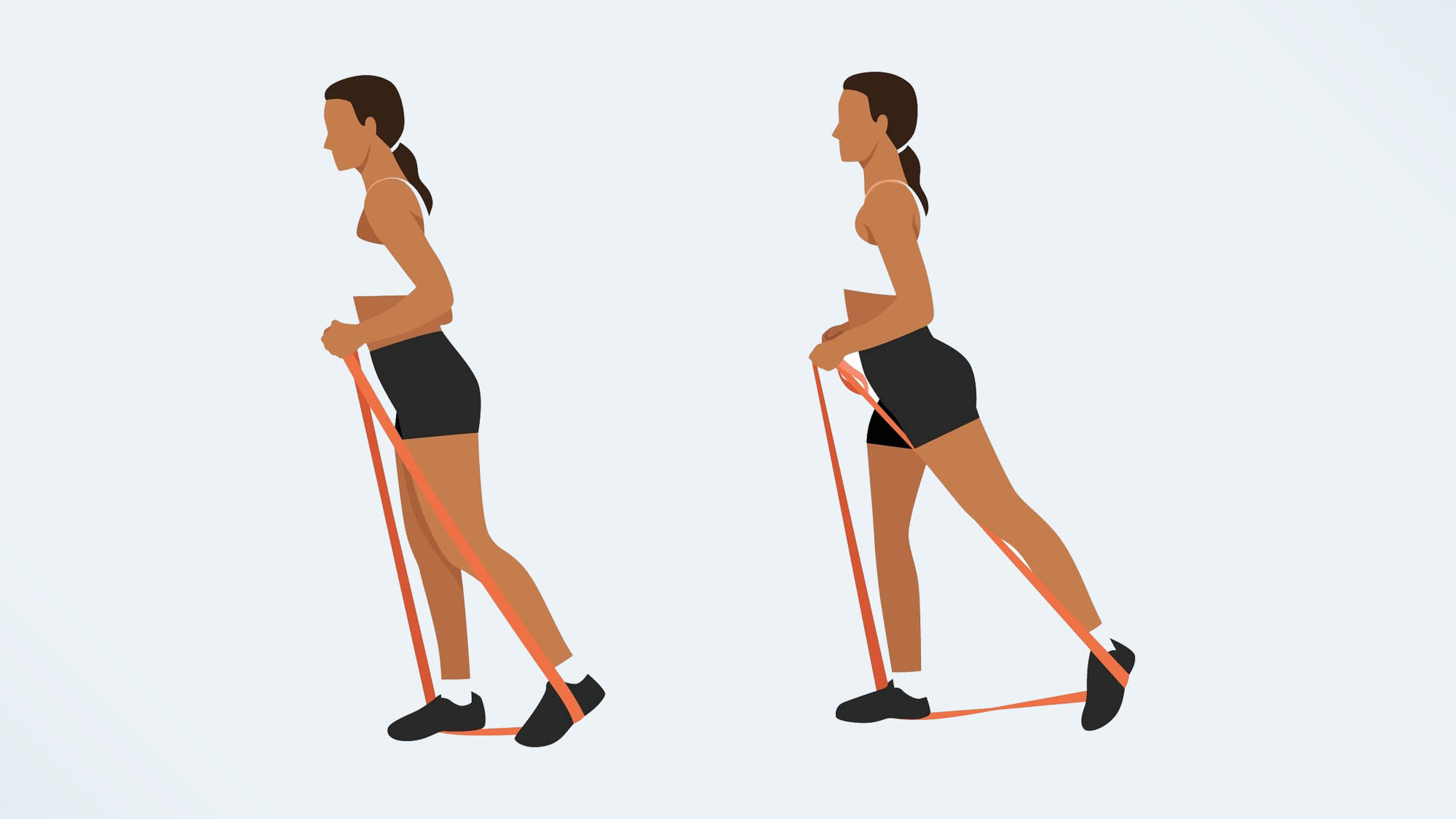
Standing donkey kicks, or standing glute kickbacks, are great if you’re short on floor space.
- Start by standing on your exercise mat, with your legs hip-width apart.
- Engage your core and shift your body weight onto your right leg.
- Raise your left leg out and back behind you, squeezing your glute at the top of the movement.
- Lower your leg back down to the ground, tapping your toe, before lifting your leg again.
- Complete all your reps on one side before switching to the other.
This variation can be made more challenging by adding a resistance band, or weights.
5. Donkey kick pulses
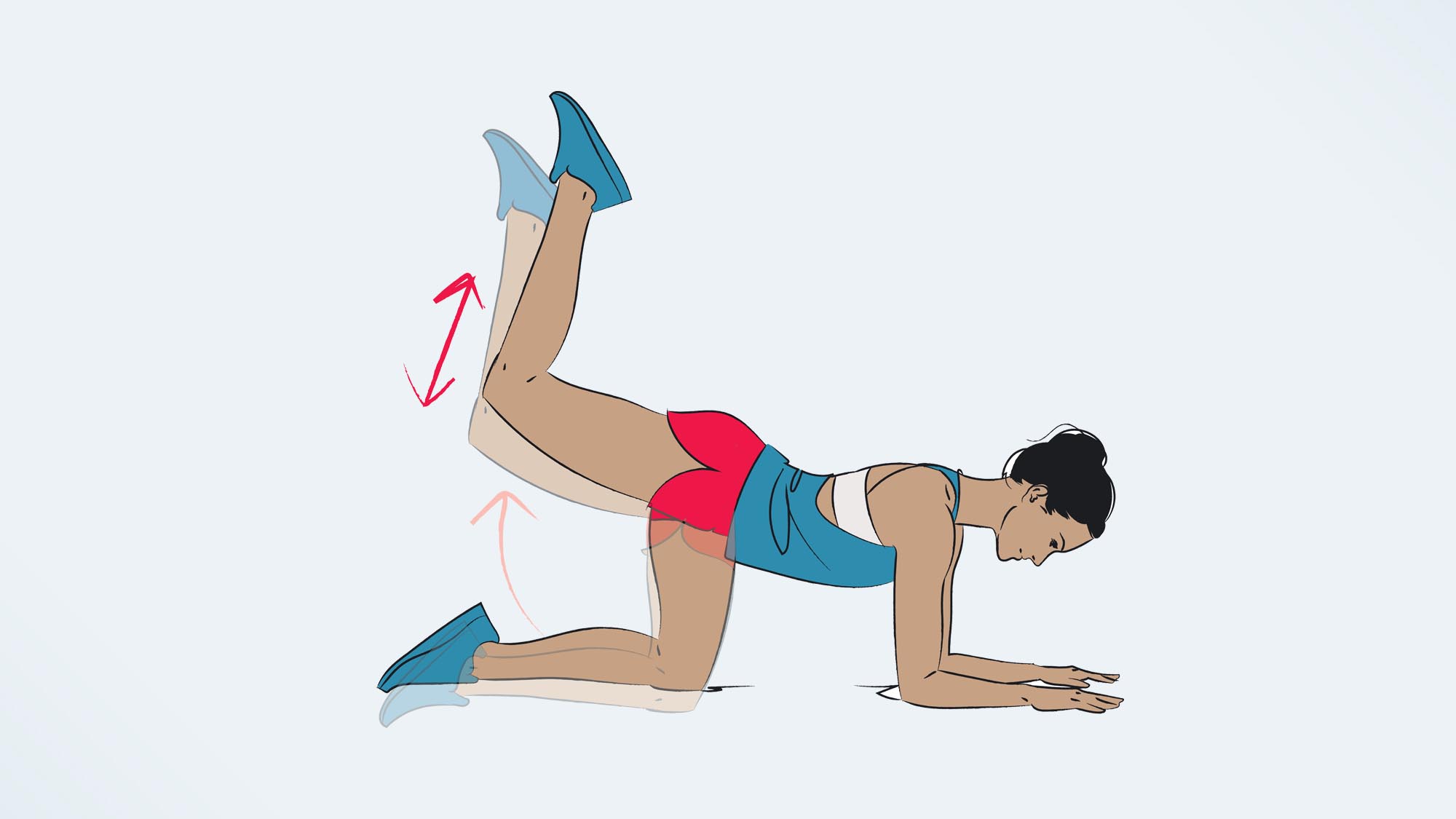
- Again, start on all fours, with your wrists stacked underneath your shoulders, and your knees under your hips.
- Engage your core, and keeping the bend in your knee, kick your leg up and back, so your knee is in line with your hip.
- From here, flex your foot and pulse your leg up to the ceiling. Keep pulsing a few inches up and down quickly, lifting from your glutes, not pushing your knee up and down with your lower back.
- Lower back down to your starting position, and switch to the opposite side.







